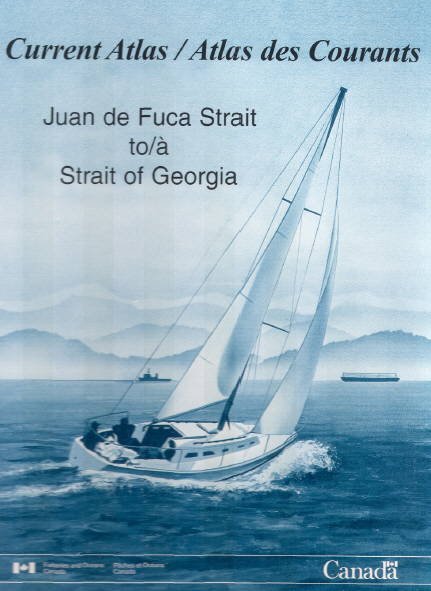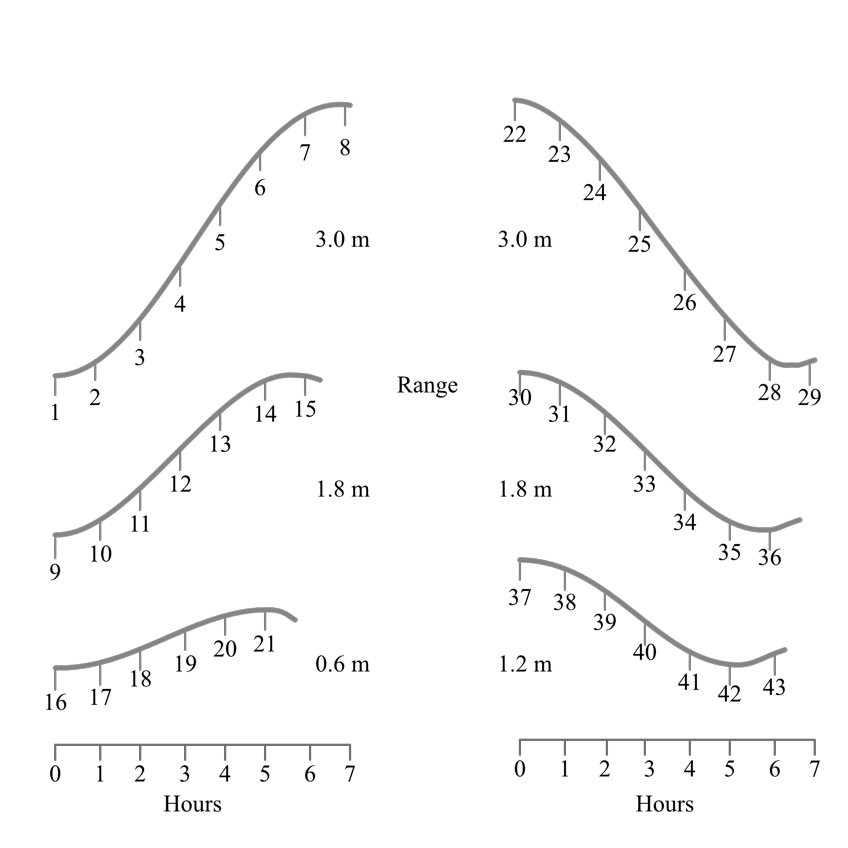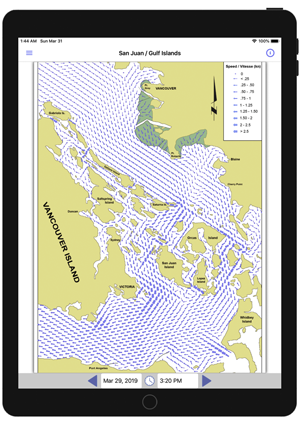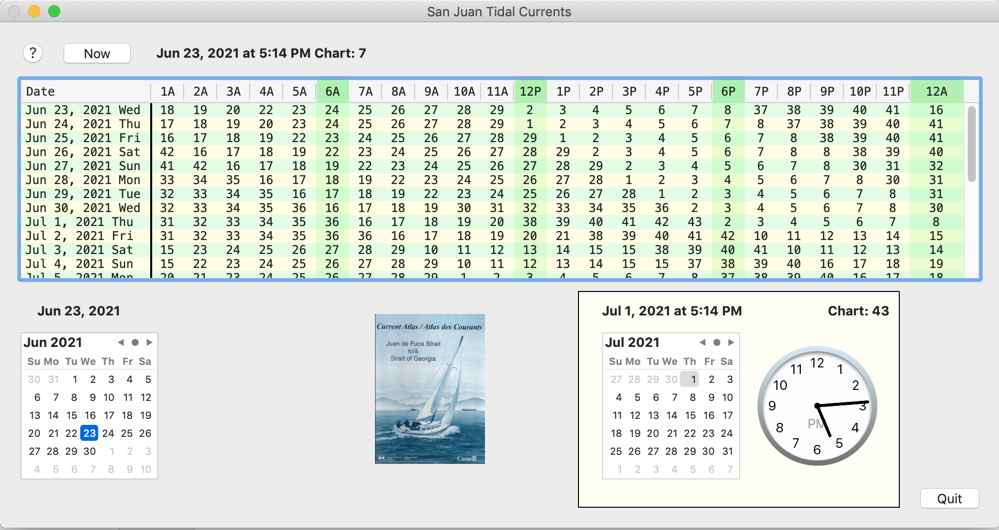Bearboat Software Home Page


The Canadian Hydrographic Office publishes a 212 page 8.5" x 11", coil-bound, book (Current Atlas: Juan de Fuca Strait to Strait of Georgia) that provides charts documenting the state of tidal currents during the various phases of the tide. Armed with the tide tables for Point Atkinson, the user of this atlas can determine the proper chart that applies at any given time. Each chart is identified by a number, (2) in the example above. You need to have access to this book to use the tools described below.
The book has an algorithm to determine the number of the appropriate chart. This depends on the magnitude of the tidal range, whether the tide is falling or rising, and the time after the last high or low tide. This algorithm, copied from the book is shown below.
(1) From Point Atkinson predicted tides extract, for the required date and time,
a) The range (high water - low water)
b) Tendency (rising or falling)
c) Time after preceding high (or low) water to the nearest hour.
(2) From the graph below, select the curve most appropriate to the results of 1(a) and (b), and select the hourly increment on the curve corresponding to the results of 1(c).
(3) The number over the increment selected above is the number of the chart showing the tidal streams for the required time and conditions.

This might seem simple, at first glance, but it is annoying and attempts have been made to ease this task for the user. The ones that I am familiar with are listed below:
This is a commercial booklet, available for a given calendar year, that shows every hour for every day in that year accompanied by the number of the applicable chart.

Mr. Borsboom created a free resource, available both as a downloadable PDF and as HTML online, which also shows every hour of every day and the number of the applicable chart from the current atlas.

This little company based out of Seattle has created an app (PNW Current Atlas) with the charts licensed from the book itself for iPad and Android tablets. This is a further step-up in convenience. The user provides the date and time, and the application shows the chart itself. This eliminates the need of looking up the chart in the paper atlas. The cost is $20.00 at the time I write this (08/14/22). Of course, this requires a tablet device and carrying such a thing on small boats can be problematic. But I like this simple application, and it is good for pre-planning, and it is not too hard to print out selected screenshots if you have computers and printers at home.

The SanJuanCurrent application, available on this page for free for Macintosh users, shows the same information in a scrollable listbox.

You might notice that each of these resources occasionally points to a different chart number for a given day and hour. This has to do with the exact characteristics of the computer algorithm that the source created from the instructions provided in the atlas. The instructions are slightly ambiguous. Fortunately when there is a discrepancy, if you actually look at the charts pointed to by the different resources, they are, in fact, very similar for any given date/time.

Above is a screenshot of the application's appearance. The user can find the applicable chart number for the present time by clicking on the Now button. It is possible to specify a specific date and time to get the appropriate chart number for any arbitrary time.
On the left side of this page, you can click on a link (SanJuanCurrentsApplication 08/14/22) to download the application. The program is only suitable for Macintosh computers. This is a free application that can be used without restriction. The resource has to be used with the understanding that errors may have been introduced by the developer. It is to be used at your own risk.
If you have thoughts on how this program might be improved, please write. I am also interested in any errors that you might detect so corrections can be implemented.
Email me with any thoughts